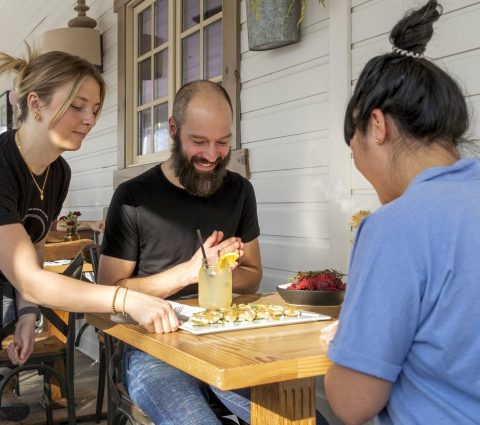- Things To Do
- Events
- Food & Drink
-
Places To Go
- Winnipeg
- Churchill
- Eastern Region
- Central Region
- Interlake Region
- Parkland Region
- Western Region
- Manitoba North
- Must-See Destinations
-
Itineraries
- Island Getaway on the Prairies
- Wheat City Wanderings in Brandon
- Escape to the water and the wild
- St. Boniface Winter: Passion and History
- Follow the path to a story in Neepawa
- Unleash your inner Viking this winter
- Explore Clear Lake this winter like never before
- Breathe in the Whiteshell this winter
- Go North for a boreal forest escape
- Treaty Areas
- Where To Stay
- Trip Essentials
- #ExploreMB Blog
Navigation Options
- FREN
- Things To Do
- Events
- Food & Drink
-
Places To Go
- Winnipeg
- Churchill
- Eastern Region
- Central Region
- Interlake Region
- Parkland Region
- Western Region
- Manitoba North
- Must-See Destinations
-
Itineraries
- Island Getaway on the Prairies
- Wheat City Wanderings in Brandon
- Escape to the water and the wild
- St. Boniface Winter: Passion and History
- Follow the path to a story in Neepawa
- Unleash your inner Viking this winter
- Explore Clear Lake this winter like never before
- Breathe in the Whiteshell this winter
- Go North for a boreal forest escape
- Treaty Areas
- Where To Stay
- Trip Essentials
- #ExploreMB Blog

This is wilderness at its purest, where prairies give way to boreal forest intersected with countless lakes and waterways, many where it’s entirely possible no human hand or foot has ever trod. As trees give way to tundra and the tree line dissipates, the landscape feels as alien as walking on the moon.

Out here, roam bears and moose and caribou and wolves and eagles and all manner of imposing, impressive and impossible-to-ignore wildlife. The north is a mystery, where the rules are different, where the air is pure, where the nights are silent and where a sense of mystery echoes in the wild.

Despite the seeming impossibility of it, here also stands Gangler’s Lodge. Stranded between Tadoule Lake and Lac Brochet, a mere 100 km south of the Nunavut border, it stands on the glassy Lake Egenolf, a haven for those yearning to explore this new world.

Our visit starts at the crack of dawn in Winnipeg. It’s August, and it’s so early, the sun hasn’t even started over the horizon yet. The only way to arrive is by air. As we fly aboard our Calm ATR 42, we leave the comfort of the city, the land beneath us changes and transforms as we fly into the proverbial ‘middle of nowhere’. Our giant of a plane makes its delicate landing on a sandy airstrip—the most sophisticated of its kind in Manitoba’ north—and it seems impossible that we’re here.

We’re greeted by a set of RTVs waiting to take us to the cabins and our home for the next three nights. The beautiful wooden structure, where we will spend numerous hours reliving our day’s adventures over lively conversation and digging into a host of gourmet food with the occasional glass of wine on the side, awaits. Our early morning means breakfast is just being served, and we happily tuck into eggs and bacon washed down with freshly squeezed orange juice.


One of the marvels of a northern operation is the knowledge that nothing is easy to come by out here. From the building materials that created this place, to the very egg on our plates, everything is a study in logistics. Three kinds of fuel need to be kept on hand at all times. Food, people, building supplies, machinery, equipment—everything must be planned and accounted for. There is no stopping at the nearest Walmart to pick something up. The nearest one is more than 1,000 km away.
Once everyone is oriented and settled into their cabins—I’m bunking with two others in a cabin with four single beds in two bedrooms with two bathrooms—it’s time to head out on the eskers.
A geological phenomenon, these huge sand bars were left behind 8,000 years ago when 4km thick glaciers receded. We hop into an RTV and traverse the first esker in what feels like a roller coaster ride up and down along the sand, stopping along the way to take in the views of surrounding lakes and explore the local flora like carpets of juniper berries and thickets of Labrador tea. Brian, one of our guides and a biologist with a penchant for herbology, describes the medicinal uses of the plants around us and how the early Indigenous peoples of the area may have used them.

We’ve arrived on the tail end of fireweed season, the bright pink blooms greeting us along the way. Seeing this northern flower up close is a tick on my personal bucket list.
Along the way we pay a visit to a set of glacial erractics—huge granite boulders that dwarf us with their size—another gift from the glaciers that once covered this land. The eskers, which vary in size, height, width and location throughout this vast area, also become a playground for mountain bike aficionados wanting to challenge themselves on a fat tire bike during an early evening ride.


They also become a haven for hikers as a climb up the highest, reveals majestic views of lakes, the frothing North Seal River, valleys and more. This area, once a regular route for the first people of Canada, is veritably strewn with artifacts like arrowheads, tools and remnants of the past. Items are lovingly recorded, marked by location and then returned to their place for the next adventurers to discover. We discover an old portage trail, marked by large rocks and happen upon a rustic trapping cabin, squatting quietly in the bushes.


Back at ground level, the lakes in this area teem with fish. It’s a regular story told back at the lodge to spend a day simply casting your line to catch a wriggling walleye, or trout, or pike every time. As a beginner, my luck isn’t quite as potent, but I do manage to snag my very first pike, and several more on a lake so still and peaceful it’s easy to feel like we are the only people left in the entire world.

After a morning spent on the water, it’s time for a quintessential Manitoba shore lunch. Our fishing guide, nicknamed Snoop (we never did find out his real one), flourishes his fillet knife with a practised hand, expertly cutting up our catch. Our other guide, Tyler, mixes the seasonings, chops onions, mushrooms and potatoes, and everything goes into enormous cast iron pans on an open fire. The result is quite simply indescribable. There’s the northern pike, yes. It’s crispy, flavourful, light. But combine that with the fact you’ve just witnessed a gourmet lunch being whipped up on a remote beach with supplies procured from a small tin box, and you’ll know you’ve experienced something truly special.



We’ve now traversed sand and water, and our next quest is the skies. A float plane awaits to fly us up to Courage Lake. If we thought we’d walked into the looking glass thus far, we’re now about to go the entire way down the rabbit hole. Heading another 100 km north from where we are, we gently alight in the air, the ride so smooth I don’t at first realize we’ve even left the water.

There’s a language amongst the people up here that consists of engines, motors, fuel and tools. Out here, a person must live by where his machines can take him. There are no roads, there is nothing but water, sky and undriveable terrain. This talk peppers every conversation, an eye-opening lesson for this city dweller.

As we make our way even farther north, we pass the tree line and what we see below is again, a whole different world. There is nothing higher than our shoulders out here, where the eye can see for miles. There are mushrooms so bright red, you’d swear they are hot house tomatoes, and ripe cloudberries so plump they almost explode in your fingers as you pick them. We march even a little further north, crossing into Nunavut, on foot, the spot marked by a medallion affixed to a stone in the ground. In the fall, this is where the caribou will come, awaiting the shutter clicks of eager photographers angling for that perfect shot.


Back at the lodge, comfort awaits. Appetizers at 5:30 are a nightly treat as adventurers return from their day of reeling in fish, kayaking the lakes, watching for wildlife and exploring the wilderness. Dinner is served at 7pm, with mouthwatering options like BBQ ribs, crème caramel, and boccocini salads filling our hungry bellies.



As the sun sets, we drift outside, Chardonnay in hand, to watch the stars come out and listen to the crackle of the bonfire. On a clear night, the northern lights will dance in the sky.
Want to have your own northern Manitoba eco adventure? Visit Gangler’s to find how you can go north.

About The Author
Hello! I'm the former senior content marketing manager at Travel Manitoba. I also happen to live in one of the most surprising and beautiful places in the world. I love discovering stories and the things that make Manitoba one of the best places to visit.
Senior Content Marketing Manager
